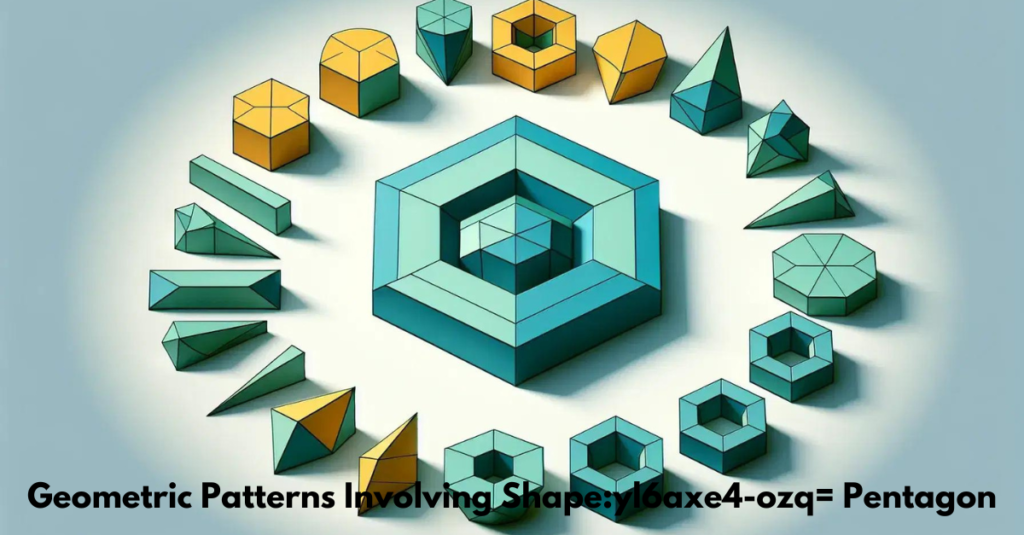In the field of geometry, the pentagon stands out as a fascinating and versatile form. A pentagon, derived from the Greek word “pentagonon” meaning “5 angles”, is a pentagonal polygon with equal or different lengths and interior angles. While the plain pentagon, with all aspects and angles equal, is the maximum typically diagnosed, versions of the shape provide a rich field of investigation for mathematicians, architects, and artists. This article delves into the residences, packages, and interesting data approximately the pentagon, specializing in the particular shape represented using the Shape:yl6axe4-ozq= Pentagon notation.
Pentagon Basics
Before diving into the specific Shape:yl6axe4-ozq= Pentagon, it is important to understand the general features of the pentagon. A pentagon is a polygon with 5 faces and 5 angles. In an everyday pentagon, all facets have the same length and all interior angles have 108 levels. The sum of the interior angles in any pentagon is usually 540 degrees.
Types of Pentagons
- Regular pentagon: All faces and angles are equal.
- Irregular pentagon: The sides and angles are not always equal.
- Convex pentagon: All interior angles are much less than 180 degrees.
- Concave pentagon: At least one internal attitude is in addition to one hundred and eighty extents.
Exploring Shape:yl6axe4-ozq= Pentagon
The notation form= pentagon seems to be the identifier of choice for a particular kind or class of pentagon. Although no longer a standard mathematical time period, this designation could represent a completely unique pentagon shape used in a specialized context involving a design version, a coding reference, or a specific geometric configuration.
Shape Properties = Pentagon
To recognize this particular pentagon, allow to destroy its residences with abilities:
- Side lengths: The notation can mean an everyday pentagon with all aspects of the same period, or an abnormal pentagon with different side lengths.
- Angles: Depending on the application, this pentagon may want to have equal angles (in the case of a normal pentagon) or a mixture of angles with a sum of up to 540 levels.
- Symmetry: If it is a regular pentagon, it can exhibit 5-fold rotational symmetry. An irregular shape would perhaps show much less symmetry.
Pentagon Shape Application
Pentagons, which include the shape = pentagon, have various applications in extraordinary fields:
Architecture and Design
Pentagons are used in architectural designs to create visually attractive and structurally sound buildings. The Pentagon building in Arlington, Virginia is one of the most famous examples, recognized for its 5-sided layout that maximizes space and functionality.
Art and Patterns
In art, pentagons are used to create intricate patterns and designs. The versatility of the form allows for creativity in tiles, mosaics and ornamental artwork. Precise houses of the shape = pentagon should inspire specific inventive expressions.
Nature and Biology
Pentagonal shapes are observed in nature, such as the styles of certain flowers and the shape of a star. Understanding these natural pentagons can provide insight into biological boom styles and structural efficiency.
Mathematics and Geometry
Mathematicians look at pentagons to discover geometric houses, relationships, and theorems. Form= pentagon can be the subject of mathematical studies, contributing to a wider know-how of polygonal shapes.
Building the Pentagon
The construction of an ordinary pentagon can be done using a compass and a ruler, following certain geometric steps. Here is the primary method:
- Draw a circle: Use the compass to draw a circle with a specified radius.
- Mark Point: Select a point on the perimeter as the starting line.
- Measure the radius: Use the compass to measure the radius and mark it around the 5 instances of the circle.
- Connect the dots: Use a ruler to connect the five factors to form a regular pentagon.
For the Shape:yl6axe4-ozq= Pentagon, construction techniques could vary depending on its specific properties and intended utility value.
Interesting Facts About the Pentagon
- Golden Ratio: In a regular pentagon, the ratio of the diagonal to the length of the side is the golden ratio (approximately 1.618), more than a few with enormous aesthetic and mathematical significance.
- Tessellation of pentagons: While normal pentagons not tessellate (a plane cover without gaps or overlaps), positive anomalous pentagons can. Tessellations with pentagons create charming patterns.
- Pentagonal numbers: In broad principle, pentagonal numbers represent a pattern of dots that form a pentagon. The nth pentagonal number is given by the system P(n) = (3n^2 – n) / 2.
Challenges and Puzzles
In addition, pentagons are characteristic of various puzzles and challenging situations, which include:
- Pantomime: These are shapes formed with the help of connecting five identical squares between the edges. There are 12 specific pentominoes and they can be used to clarify jigsaw puzzles.
- Pentagonal Magic Squares: A variant of magic squares where the numbers are arranged in a pentagonal grid according to unique principles.
Conclusion
Shape:yl6axe4-ozq= Pentagon, even as a completely unique and undoubtedly specialized pentagonal shape, emphasizes the scope and intrigue of 5-sided polygons. From architectural marvels to artistic masterpieces and mathematical puzzles, pentagons play a vital role in many domain names. Understanding their seats and programs enriches our understanding of geometry and its influence on the arena around us.



